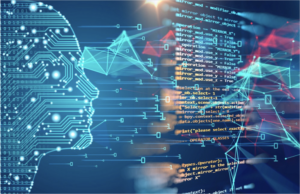The Last Look…
Posted by Colin Lambert. Last updated: August 8, 2023
It is easy for me to tell that AI is starting to gain traction in financial markets from the number of firms who want to crowbar the phrase into any release – and I can tell you, there are a lot! But is AI actually going to radically change how we operate in FX, or is it just the next incremental step in the market’s evolution?
Talking to people in the market about AI, there is something of a mixed response – liquidity providers very much seem to believe it is an incremental step forward that can help processes that support their work, while execution services providers are more concerned with its impact.
Given the quant processes that have built up around the pricing engines, it is hard to see how AI will actually change much – automated pricing has been in FX for many years, therefore it is hard to disagree that AI is, possibly, just a small step forward. On the execution side, however, the concerns are not about the trading itself – again smart order routing has been backed by quant processes for years – but about the market impact.
Over the past few weeks I have written a couple of times about pre-hedging and as I write this, we have just published the latest analysis on market impact at the month-end Fix. The latter always draws an audience, the former has attracted quite a mailbag over the past fortnight. The question is, therefore, will AI exacerbate market impact and any pre-hedging activities?
From my perspective, it is probably inevitable. If I were building an AI model to trade in FX markets, the first thing to look out for is flow, or more specifically, patterns of flow. Pre-hedging, or even hedging ahead of the WM window at the Fix are, by definition, according to a pattern, and thus should be picked up by the AI. This will be done quicker perhaps, and the decision making around the information may also be quicker, thus exacerbating the market impact.
Ultimately, though, even here I am not sure it is a radical change – there are automated trading firms out there that are already doing just this. It is clear to anyone who looks at it long enough that there is a cottage industry of small trading firms who are taking signals from activity ahead of the WM window, and acting upon it.
What would be different in a world more dominated by AI, of course, is what happens when the major market makers start doing the same? This is a tricky area for many banks in particular, as we all know, but if more are segregating their order execution teams from the main business, surely that main business will use AI, detect these patterns, and price accordingly?
This is not only about pre-hedging though, because as someone pointed out to me last week, any order that is executed over time will send out a signal. At the moment the child trades are often randomised and that does a (half) decent job of masking the flow for a period of time, but would this be the case when the AI is in play? After all, logic dictates that if you see a pattern of selling or buying, you skew and/or trade in that direction. Can the AI be taught not to use these signals? More pertinently, should it be taught? The data it is using is public after all, or post-trade at worst, so why should its logic be trained in an unnatural direction?
Market impact has grown in importance over recent years, and is unlikely to diminish any time soon, but AI could take it to the next level
So while AI is not going to radically change how the market operates, because it is merely using, and perhaps enhancing, techniques that are already in place, its behaviour could very much prompt change, if it follows the logical path and starts acting upon known information. The only way it won’t, or at least its influence will be diluted somewhat, is if no capital is allocated to it – but then does that represent full value for the hundreds of millions of dollars invested to get AI into the firms’ systems in the first place? I struggle to see the point of deploying AI to detect market patterns and not give it the ability to trade, and monetise, that information.
This then, should give those executing larger tickets food for thought. Market impact has grown in importance over recent years, and is unlikely to diminish any time soon, but AI could take it to the next level. It could also, into the bargain, re-introduce a rather old-fashioned skill set to the execution team – timing.
The nice thing about markets is when they start moving, they attract a lot of attention, and flow. If the execution business is going to trade against one of these mini-trends, then that is the time to use an algo and break the order down. The AI looking for the business will be blinded to a degree by the broader flow.
If, however, the order is “with the wind” then perhaps these teams need to ask themselves why use an algo? Perhaps then, the better option is a true, full amount, risk transfer? After all, a big internaliser will minimise the amount that hits the public market, and I suspect they will be keener to keep the business quiet if it is on their books! An agency execution is likely to adhere to a time limit; risk transfer passes the problem onto someone else, perhaps more equipped to handle it?
This should also be food for thought for those who believe the future of FX is in the buy side becoming market makers in their own right. For a start, if you’re going to make markets who have to do it on an active basis, not just dip in and out as and when it suits you – by doing that you are signalling your intent to the whole world. How many buy side firms really want to do that? Fewer than the idealists think is my belief.
If one firm allows the AI to evolve its trading methods by using any and all data received, it will be at an advantage to one who is perhaps bound by stricter rules on information use
Equally, those buy side firms seeking to use their own algos in the market will run into the same problem of signalling; and a third option –outsourced execution, very much depends upon who the service provider is. A major market player who can internalise and mask all kinds of business? No problem. A third-party provider offering “independence”? Potentially big problem, because those firms are not even market making – that is signalling risk 101.
The final issue with the impact of AI on FX markets is, as noted, likely to be behavioural, more specifically, conduct-related. The timing technique I mentioned earlier can be carried out by AI – so AI will seek to battle AI effectively, and this means it comes down to the limits imposed by the individual firms on their proprietary AI. If one firm, for example, allows the AI to evolve its trading methods by using any and all data received, it will be at an advantage to one who is perhaps bound by stricter rules on information use. Perhaps what is needed is a specific set of guidelines for AI users?
Ultimately, however, these guidelines – and this is a theme that permeates the whole AI debate – would be little different to what exists now. There are acceptable boundaries of conduct laid down by, for example, the FX Global Code, that are just as suitable for AI as they are humans.
And this is the big thing about AI in my view. Yes, it will advance technology, may make markets slightly quicker in decision making terms by improving processes, but markets are fairly simple beasts, and there are only so many things that it can do – and all are now done in the manual/semi-automated world. So yes, it will change the periphery a little, but ultimately the future we are looking may be characterised by different protagonists – less “Janet vs John” and more “HAL vs SAL” (niche, I know) if you like. All I can say is I hope Arnie is on standby…

